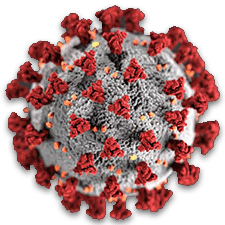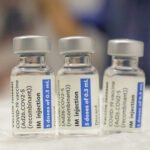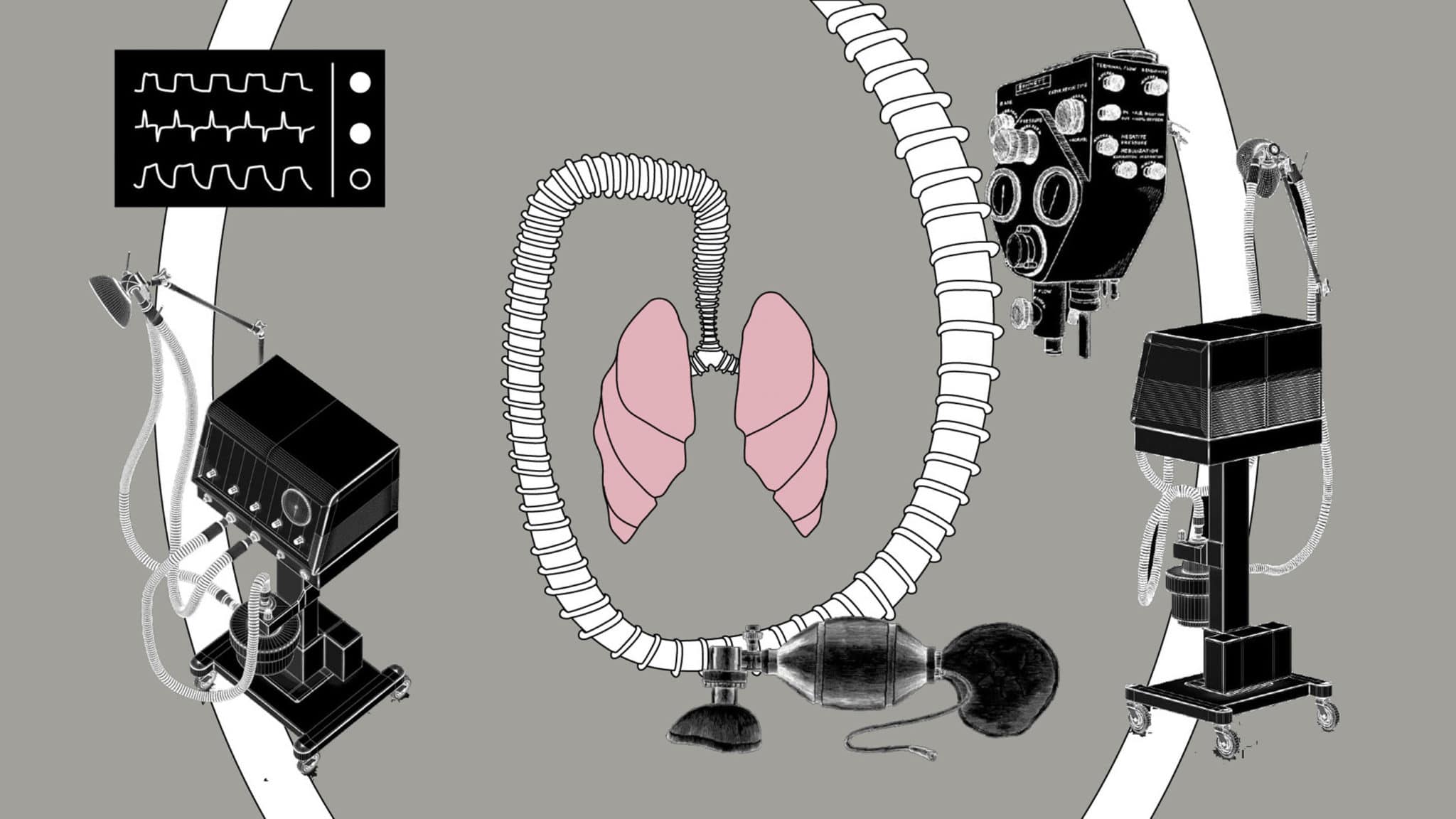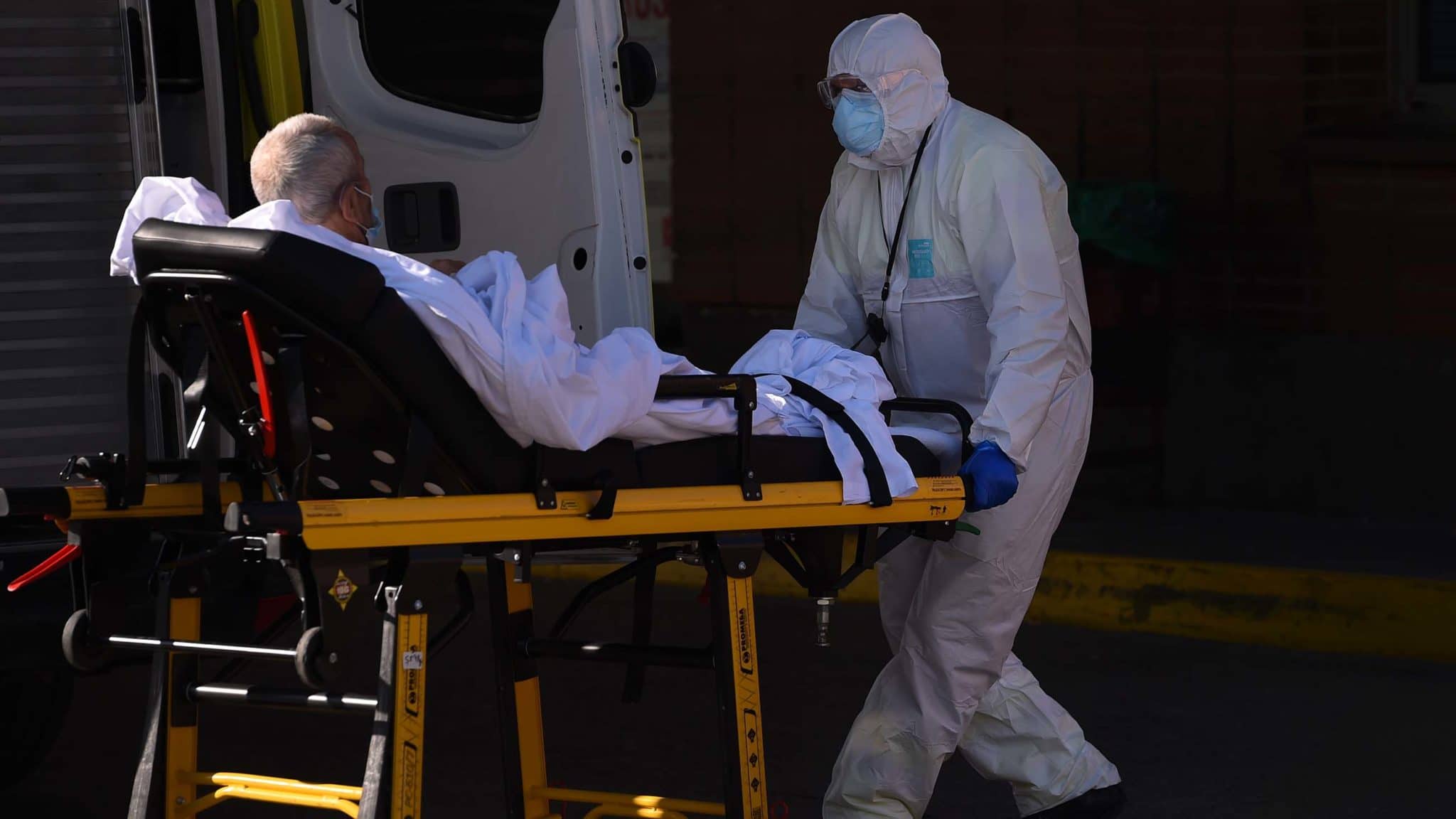As Covid-19 began to lay siege to New York City’s hospitals in March, a small but consequential debate broke out in American emergency rooms and intensive care units: Was it possible that ventilators, the much-politicized medical devices widely seen as a lifeline for severely ill Covid-19 patients, were being overused? With a pandemic poised to sweep through the U.S. and the horrific example of Italy still lingering, the dispute gained a particular urgency.
At the core of the debate was a four-letter acronym that most Americans had never heard of: ARDS, or acute respiratory distress syndrome, a harrowing lung condition that was listed on many Covid-19 death certificates. Since it was first identified half a century ago, ARDS has been mired in controversy — over how to define it, how to diagnose it, and whether it should be considered a true clinical condition at all. It is because of ARDS, a diagnosis that owes its very existence to a machine, that we went into the pandemic thinking ventilators would save us. Its story serves as a cautionary tale about the dangers of prioritizing high technology and its medical paradigms in settings where one medical treatment does not fit all.
Coined in 1967 by Thomas Petty, a respiratory physician at the University of Colorado, ARDS has been a source of contention from the start. The causes of the condition were, in Petty’s own words, “obscure.” He and three colleagues proposed the syndrome after observing a dozen patients with radically different illnesses and injuries (gunshots, pancreatitis, traffic accidents) who all presented with similar respiratory symptoms: low blood oxygen levels; fluid or other infiltrates in the lungs; and “stiff” lungs that didn’t properly expand and contract even under mechanical ventilation.
Desperate for a solution, Petty and his colleagues put the patients on an older ventilator that blew at high pressure, even as a patient exhaled — a technique he called positive end-expiratory pressure, or PEEP. The patients’ blood oxygen levels improved, and Petty and his colleagues felt confident that they had identified a new clinical syndrome, along with an effective treatment for it. They dispatched a paper to The New England Journal of Medicine — which promptly rejected it, on the grounds that the doctors’ use of ventilators was unorthodox and possibly dangerous, Petty reported. The paper was rejected by two other journals before being published by The Lancet in 1967. It remains the foundational paper on ARDS and has been cited more than 4,000 times.
Although Petty’s patients shared a number of common symptoms, he insisted that the patients’ positive response to PEEP was one of the condition’s unifying traits. The ventilator, even more so than the underlying disease or injury, was crucial to the definition of the syndrome.
More than a few doctors and scientists were suspicious of the new syndrome. In a 1975 editorial, “The Adult Respiratory Distress Syndrome, (May it Rest in Peace),” Petty’s main antagonist, pulmonologist John Murray, called ARDS a “fashionable” disorder, a haphazard “lumping” together of unrelated chest conditions, which seemed only to share a final set of symptoms. In his response, “Confessions of a ‘Lumper,’” Petty argued that even if you conceded Murray’s point the cause of the disorder was irrelevant; the pathology was what mattered. If a disease, injury, or illness resulted in poor oxygenation, lung infiltrates, and stiff lungs, then it had to be ARDS, he wrote. Those advocating for a more nuanced diagnosis he labelled “separatists.”
Over the ensuing decades, even those doctors who accepted ARDS as a valid clinical condition would frequently disagree over how it should be diagnosed. In 1994, a major redefinition removed the criteria to measure the ability of the lungs to expand and contract in response to changes in pressure known as lung compliance in an attempt to standardize the disorder. In 2012, a panel of experts again redefined the syndrome, specifying that, to make a proper diagnosis, blood-oxygen levels must be measured while a patient is on PEEP. That year, an editorial in the Journal of the American Medical Association noted warily that the latest definition “has essentially excluded ARDS as a possible diagnosis in patients without ventilation.” The diagnosis of ARDS had become tied to the ventilator.
So this year, when Covid-19 patients began to arrive at hospitals with frighteningly low blood-oxygen levels, matching preliminary reports from China, they were funneled in droves onto ventilators.
But a 75-year-old Italian anesthesiologist and intensive care specialist, Luciano Gattinoni, along with a group of colleagues, cried foul. He noticed that Covid-19 pneumonia differed from “typical” ARDS in one important way: His patients’ blood oxygen levels were low, but many of them had no difficulty breathing on their own; their lungs were relatively compliant. That condition would come to be known as “silent,” or “happy” hypoxemia. Yet under the updated protocols, patients were being diagnosed with ARDS and quickly put on a ventilator, a harrowingly invasive procedure that involves inserting a tube down the patient’s throat and putting them under sedation to keep it there. Ventilators saved lives, physicians say, but they can also have considerable side effects, including lung damage.
“Why do you use this kind of PEEP? Are you crazy?” Gattinoni remembers counseling his younger colleagues at his hospital.
Gattinoni warned them against viewing ventilators as cure-alls and urged them to, whenever possible, supply patients with “the lowest possible PEEP and gentle ventilation,” as he later put it in a letter published in the American Journal of Respiratory and Critical Care Medicine. For early-stage patients, he advised non-invasive methods in the hopes of avoiding ventilation altogether. Other ICU and ER doctors related that gentler methods such as using nasal cannulas and face masks to deliver air to the lungs seemed to improve oxygen levels, STAT reported.
 |
Thoughts or questions on Covid-19? |
Gattinoni’s recommendations touched off considerable controversy over whether or not Covid-19 causes ARDS, whether ventilators offer the best treatment for the new disease, and how the machines should be operated. That debate is ongoing, and has split, roughly, into two camps: One side argues that conventional protocols should be followed until “a detailed characterization of Covid-19 respiratory failure and its response to established ARDS therapies” can be made; the other asserts that “mistakes” were made in the early days of the pandemic and the standard treatment “should be deeply reconsidered,” as Gattinoni argued in a recent rebuttal.
At the height of New York’s pandemic in late March, an emergency room doctor at Maimonides Medical Center in Brooklyn named Cameron Kyle-Sidell posted a video on YouTube decrying the risks of relying on “a medical paradigm that is untrue.” Kyle-Sidell’s cri de coeur, which has drawn more than 800,000 views to date, now looks prescient: One study in New York City found that 88 percent of Covid-19 patients placed on ventilators died.
“What was happening at the bedside was so stark that it’s always been hard for me to accept the possibility that somehow we weren’t causing a significant amount of morbidity with our initial practice,” said Kyle-Sidell in a recent interview.
There is, perhaps, a moral to the story. While much of the discussion around ventilators in the early days of the Covid-19 crisis centered around their limited supply, it took time before their limited effectiveness was revealed. Doctors like Helen Ouyang, an emergency physician in New York City, reported feeling devastated by the limits of modern medicine, citing a concept most associated with combat veterans known as moral injury to describe the psychological impact on doctors as technology was failing their patients.
Robert Kacmarek, director of respiratory care at Massachusetts General Hospital, also recalled “difficult” times as Covid-19 exposed the limits of standardized protocols. “For this kind of disease especially, you have to have individualized medicine,” he said. “You have to set the ventilator based on the individual pathophysiology of the patient and not based on a protocol that is designed for multitudes.”
Here, earlier uses of mechanical ventilation offer a valuable lesson. In the summer of 1952, when a severe polio epidemic struck the city of Copenhagen, local medical students worked for weeks in eight-hour shifts, squeezing rubber bags to hand ventilate over 300 polio patients. The students adjusted their technique within a human context, based on clues gleaned from eye contact with their patients; the technology itself was secondary. The effects were profound. The mortality rate dropped by about half, and the episode established the value of ventilation in a way that changed the course of medicine.
By contrast, the ARDS controversy that shaded the early response to the Covid-19 pandemic exposed a disconnect between the promise of high technology and the bedside reality. The vigorous debate on the value of a half-century old diagnosis is a reminder that in medicine, no machine or protocol, however well-designed, can substitute for empathy, judgment, and evidence.
Yvan Prkachin is a historian of medicine and medical technologies, and a lecturer in the history of science at Harvard University.
Lisa De Bode is a freelance journalist and a 2019 MIT Knight Science Journalism Fellow.












Comments are automatically closed one year after article publication. Archived comments are below.
MUST READ
I suffered deeply with stage four sarcoidosis which progressed to idiopathic pulmonary fibrosis (IPF). I was hospitalized eighteen times in three years, mostly with flare ups and pneumonia. For me, the chronic widespread pain takes my breath away more than the disease itself. At times the pain is so severe I find it difficult to do anything. My life was gradually coming to an end, until I saw World Herbs Clinic on google during my research for alternative help for IPF.. I knew health is wealth thus I decided to give it a try, thank God I did. I got the Lungs disease formula four working days after placing an order. OMG I started noticing change in my breath after one month of taking the herbs formula, My IPF was completely reversed after THREE months of usage. Now i’m happy and free from this deadly disease. I recommend World Herbs Clinic for Lungs disease patients..
Mechanised medicine will never be a healing modality until it remembers what holistic medicine never forgot – each human, is individual, each expression of disease is individual and all healing is done by the body with medical modalities supporting, or, as is often the case with mechanical medicine and drug-driven treatments, thwarting.
Yes. It’s important to think outside the protocol. Kyle-Sidell is my hero. Aspirin, a new drug, was used in lethal doses in 1918 pandemic.
Yes, and how conveniently it is forgotten that in the 1918 pandemic, Homeopathic medicine stood out in terms of saving patients. Now the chemists who run conventional medicine want to destroy it because it has low profit outcomes.
References please. It’s hard to remember something that didn’t happen or was not documented.
What a great piece with such an original approach to the pandemic. A strong demonstration of the power of history of medicine and science in questioning our beliefs, especially when these beliefs are leading us to erroneous treatments. The “cautionary tale” underlined by this article is fascinating and could also be applied to areas outside of medicine: following a paradigm without questioning its use can lead to disastrous outcomes. A paradigm is only valid under specific conditions.